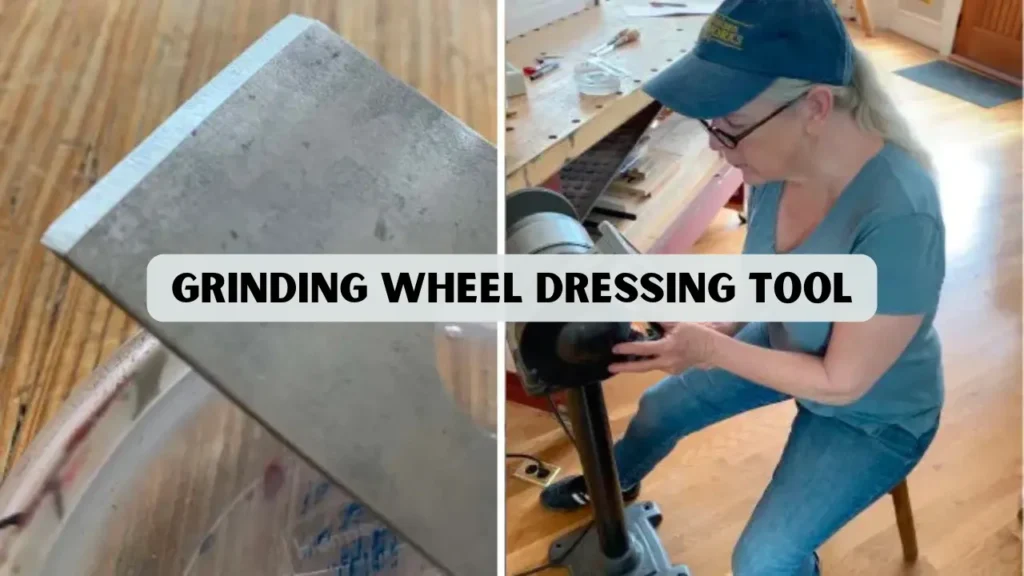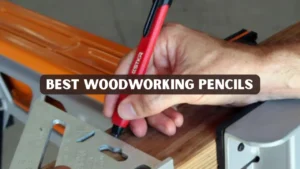Grinding wheels are indispensable in any machining or woodworking workshop. Whether you are sharpening lathe tools, grinding cutting tools, or creating precise metal surfaces, the performance of your grinder depends heavily on the condition of the grinding wheel. Over time, these wheels wear unevenly, become clogged with debris, or develop glazing. That is when a grinding wheel dressing tool becomes essential.
A properly dressed wheel ensures smooth operation, accurate material removal, and extended wheel life. Both hobbyists and professionals benefit from maintaining their wheels effectively. In this guide, we will explore the main types of dressers, how to use them safely, benefits, buying considerations, maintenance tips, real-world case studies, and frequently asked questions.
Key Takeaways
- A grinding wheel dressing tool is essential for maintaining grinding efficiency and achieving a high-quality surface finish.
- Various types of dressers are available, including diamond dressers, star wheel dressers, dressing sticks, and rotary diamond dressers.
- Regular dressing extends the life of grinding wheels and ensures precise tool sharpening.
- Following proper safety measures is critical when using a grinding wheel dressing tool.
What Is a Grinding Wheel Dressing Tool
A grinding wheel dressing tool is a specialized device used to refresh and reshape the surface of a grinding wheel. Its main functions include:
- Removing clogged material such as metal swarf or bonding residue
- Truing the wheel, meaning restoring its round shape and removing high spots
- Exposing fresh abrasive grains so the wheel can cut efficiently again
If you neglect dressing, your grinding wheel can become less effective, produce a poor surface finish, and even damage the tools or workpieces you are grinding. According to tool and machining reference material, periodically dressing the wheel ensures consistent cutting force, better surface quality, and safer operation.
The Science Behind Dressing vs. Truing
Dressing and truing are closely related but distinct processes. Dressing refers to cleaning and conditioning the surface of the wheel by fracturing dull abrasive grains and opening clogged pores. Truing, on the other hand, involves restoring the wheel’s geometry, making sure it runs concentric to its axis and removing any runout.
According to engineering texts, glazing (a shiny, smooth surface) happens when abrasive grains wear down and bond material seals over them, causing reduced cutting power. Dressing reverses this by exposing fresh grains and removing embedded material. Meanwhile, truing ensures the wheel is balanced and properly shaped, restoring its performance and reducing vibration.
Types
There are four main types of grinding wheel dressing tools commonly used in workshops and industrial settings:
1. Diamond Point Dressers
These tools use a single diamond tip mounted on a shank. They are typically used for high-precision truing or finishing. Because diamond is extremely hard, they can gently remove bond material and expose sharp grains without aggressive cutting.
Best for:
- Fine tool sharpening
- Hard abrasive wheels such as carbide or vitrified wheels
Advantages:
- Very accurate
- Long life
- Minimal material removal when used carefully
2. Multi‑Point Diamond Dressers
These dressers have several diamond tips mounted on a plate (cluster). They are used when more rapid dressing or larger contact area is needed.
Best for:
- Workshops that dress frequently
- Larger grinding wheels
- Applications where minimal downtime is desired
Advantages:
- Faster dressing
- Even wear distribution
- Durable and efficient
3. Star Wheel Dressers
These tools consist of rotating, star-shaped hardened steel or carbide wheels. As the dresser is moved across the wheel, the stars rotate and “scour” the surface, removing glazing and high spots.
Best for:
- Coarse grinding wheels
- General-purpose bench grinders
- Reshaping or truing the wheel surface
Advantages:
- Rapid material removal
- Cost effective
- Easily replaceable wheels
4. Dressing Sticks (Abrasive Sticks)
These are solid blocks made of aluminum oxide, silicon carbide, or other bonded abrasives. They are used by hand to dress the wheel, gently removing debris or dull grains.
Best for:
- Manual touch ups
- Maintaining superabrasive wheels (like CBN or diamond)
- Light conditioning rather than aggressive reshaping
Advantages:
- Inexpensive
- Simple to use
- Very good for intermittent maintenance
5. Rotary Diamond (Roll) Dressers
These are cylindrical tools with industrial-grade diamond grit distributed over a roller surface. They rotate as they engage the grinding wheel and are ideal for high precision and continuous dressing in production environments.
Best for:
- CNC grinding machines
- High-volume industrial grinding
- Profiling or maintaining specific wheel geometries
Advantages:
- Highly accurate
- Long service life
- Efficient for continuous or automated dressing
10 Best Dressing Tools
Choosing a high-quality grinding wheel dressing tool can make a significant difference in precision, efficiency, and wheel life. Here are ten of the best tools available for workshops and industrial use:
1. One Clear Winner Grinder Wheel Dressing Tool
Highly rated for its versatility, this tool works well on both bench grinders and precision wheels. It features a durable construction that ensures long-lasting performance. Users report consistent results even after extended use, making it a favorite for both hobbyists and professionals.
2. GrindTech Diamond Wheel Dresser
This diamond-tipped dresser is designed for industrial applications where precision is critical. Its hardened tip provides excellent durability and consistent dressing performance. The tool allows for easy maintenance of high-speed steel and carbide grinding wheels.
3. Dremel 2615 Single-Point Diamond Dresser
Perfect for hobbyists and light precision work, this compact tool is easy to handle. The single-point diamond tip provides precise dressing for small wheels and delicate tasks. Its affordability and reliability make it ideal for home workshops and occasional users.
4. Star Wheel Dressing Tool by Kaysongreen
Featuring multiple rotating star-shaped pins, this dresser quickly removes debris and glazing from wheel surfaces. It is highly effective on general-purpose bench grinders and coarse wheels. Users appreciate its fast operation and low cost, making it a practical choice for frequent dressing.
5. Rotary Diamond Roll Dresser (MSC Direct)
Ideal for CNC machines and continuous dressing cycles, this cylindrical diamond tool maintains precise wheel profiles. Its rotating diamond surface ensures smooth and uniform dressing across the wheel. The tool is widely used in industrial production settings for high-volume grinding.
6. Abrasive Dressing Stick (Aluminum Oxide)
These sticks are excellent for manual touch-ups and light conditioning of wheels. They are simple to use and very cost-effective for hobbyists and small shops. The abrasive material helps refresh dull surfaces and restore cutting action efficiently.
7. Multi-Point Diamond Dresser (Universal)
Equipped with several diamond tips, this dresser provides smooth operation and long-lasting durability. It is ideal for heavy-duty applications and larger wheels that require frequent dressing. Its design ensures even wear and consistent wheel performance over time.
8. Truing/Profiling Diamond Dresser (Dumore Tools)
This tool maintains precise wheel profiles, ensuring accurate grinding for specialized tasks. It is suitable for surface grinders, CNC applications, and precision tool sharpening. Users find it highly reliable for maintaining geometric accuracy and improving surface finish quality.
9. CBN Wheel Dressing Stick
Specifically designed for conditioning superabrasive wheels like cubic boron nitride, this tool restores cutting efficiency quickly. It is very effective for hard materials and long-lasting abrasive wheels. Small and easy to use, it helps prevent glazing and uneven wear in demanding applications.
10. Bench Grinder Star Wheel Dresser Set
This economical set includes multiple star wheels for versatile use on different grinders. It is perfect for home workshops and small shops looking for cost-effective maintenance solutions. The set allows quick and easy dressing, keeping wheels in top condition with minimal effort.
How to Use a Dressing Tools For Grinding Wheels Safely
Using a grinding dressing tool safely is critical for both longevity of the wheel and personal safety. Here are the recommended steps and precautions:
- Put on personal protective equipment: safety glasses, gloves, and a face shield if available.
- Make sure the grinder is running at its normal operating speed before starting to dress.
- Mount the dresser securely; if it is a hand-held tool, rest your grip firmly and steady.
- Apply the dresser gently against the wheel face; do not press too hard.
- Move the dresser smoothly across the face of the wheel so that it contacts the entire width.
- Continue until sparks or consistent contact indicate the surface is being regenerated.
- Stop dressing and visually inspect the wheel. Look for an even, clean surface without deep gouges.
- If required, do a second pass with lighter pressure for finishing.
It is also important to periodically check the dresser itself. A diamond tip that is excessively worn or damaged can cause poor dressing or even damage the grinding wheel. This method of dressing aligns with safety and precision recommendations from dressing tool manufacturers.
Benefits
Here are the main advantages of incorporating a proper dressing tool into your workshop routine:
- Improved Grinding Accuracy: By restoring the wheel surface and shape, you get consistent material removal and better dimensional accuracy.
- Longer Wheel Life: Frequent dressing prevents glazing and loading, reducing premature wear.
- Superior Surface Finish: Exposed fresh grains cut more cleanly, minimizing scratching or burn marks.
- Better Efficiency: A clean, properly dressed wheel lowers power consumption and reduces grinding time.
- Enhanced Safety: A properly dressed and balanced wheel runs with less vibration and risk.
Buying Guide
When deciding which dressing tool to buy, consider these key factors:
- Material Quality: Tools with industrial-grade diamond tips or high-quality bonded abrasives are more durable and effective.
- Compatibility: Make sure the dresser fits your grinding machine or hand tool setup.
- Adjustability: For production environments, adjustable and precise dressers allow you to control the angle, speed, and depth of dressing.
- Budget vs Durability: Higher-priced tools often pay back in longer life and fewer replacements.
- Application: If you do precision grinding, a diamond point or roll dresser is likely best; for heavier rough grinding, a star wheel dresser may be more suitable.
Maintaining Your Grinding Wheel and Dresser
Maintaining both your grinding wheel and the dresser ensures optimal performance and safety over time. Here are some maintenance best practices:
- Clean your grinding wheel regularly to remove metal build-up and bonding residue.
- Inspect the dresser tip or roller for wear or damage, and replace if necessary.
- Store dressing tools in a dry, dust-free environment to prevent corrosion.
- Follow the manufacturer’s guidelines for recommended dressing interval and technique.
- If you use multiple wheels of different types (e.g., bonded vs superabrasive), use separate dressers to avoid cross-contamination.
Real‑World Case Studies
- A hobbyist woodworker noticed burn marks and uneven bevels on his lathe tools because his grinder wheel had become glazed. After he used a single-point diamond dresser, he restored the wheel’s cutting action and reduced his sharpening time by almost 40 percent.
- A small machine shop was dealing with chisel edges grinding out unevenly due to an out-of-round wheel. By switching to a star wheel dresser, they reconditioned the wheel surface and began producing smoother, more consistent tool edges on every pass.
Conclusion
A grinding wheel dressing tool is a fundamental asset for any workshop aiming for precision, consistency, and longevity in its grinding operations. Whether you choose a diamond point dresser, a star wheel dresser, or a roll-type rotary dresser, regular use of this tool preserves the condition of your grinding wheels. That leads to better work quality, reduced downtime, and safer grinding conditions.
By combining careful selection, correct usage, and good maintenance practices, you can maximize the value of your grinder and extend both the wheel and tool life. Investing in a reliable dresser unlocks significant efficiency gains and improved performance, a wise decision for any serious machinist or woodworker.
FAQs
How often should I dress my grinding wheel?
It depends on how heavily you grind, what materials you use, and the condition of the wheel. In high-use operations, you may need to dress every few hours. For hobby or occasional grinding, once per week or every few sessions may suffice.
Can I use a diamond dresser on any grinding wheel?
Diamond dressers are best suited to precision or hard-bond wheels. They might not be cost-effective or necessary for softer wheels, such as very porous aluminum‑oxide wheels.
Is dressing a grinding wheel dangerous?
It can be, if not done properly. Always use personal protective equipment, apply light pressure, dress methodically, and inspect both the wheel and dresser for damage before use.
What is the difference between truing and dressing?
Truing restores the geometry and balance of the wheel (making sure it runs true), while dressing refreshes the abrasive surface by exposing new sharp grains and removing clogged or glazed material.
Can I use the same dresser for different wheels?
It is possible, but not ideal. Using different dressers for different wheel types reduces the risk of cross-contamination and preserves the life of both the wheel and the dresser.




